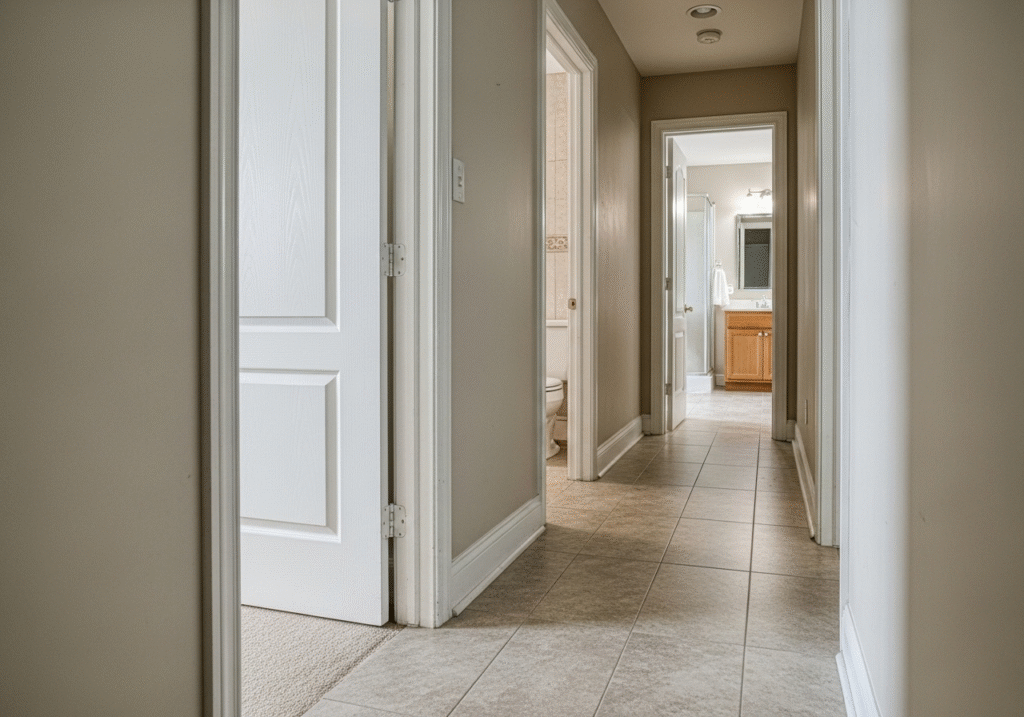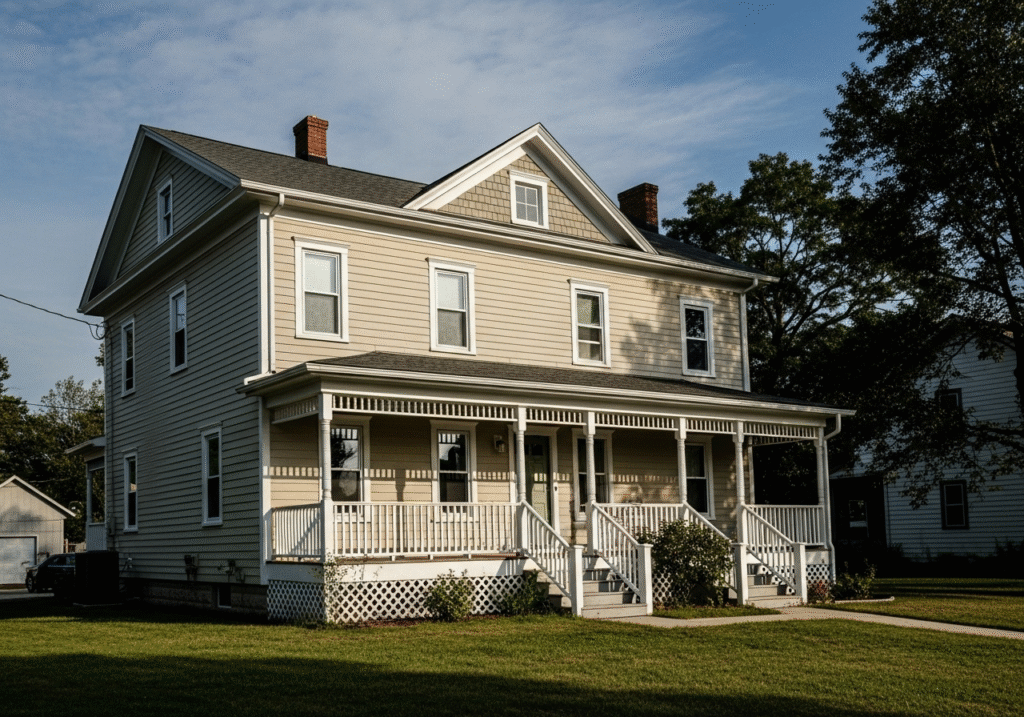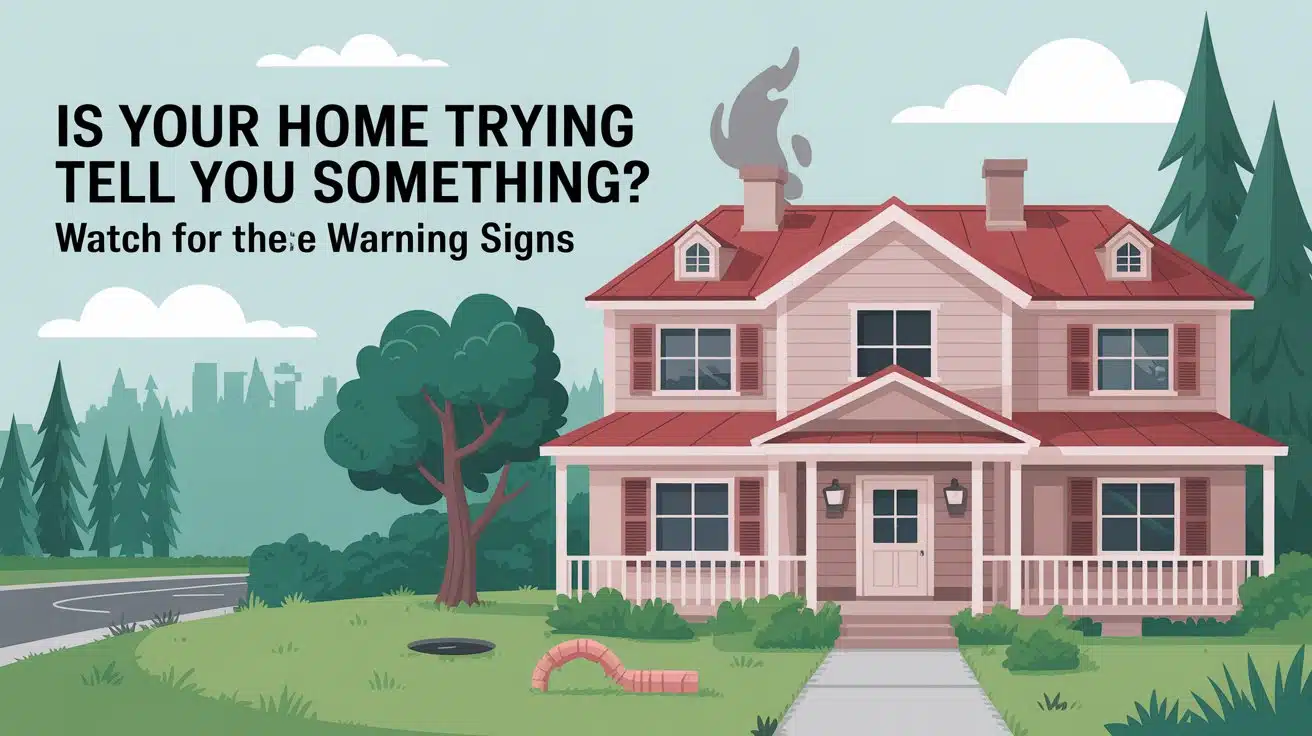You ever hear a weird thump in your house and just pretend it’s the wind? Maybe it’s that one creaky step you avoid, or the water stain you’re pretty sure wasn’t there last month.
If you’ve been shrugging off those little quirks, you’re not alone. A lot of people assume their home will somehow “hold it together” until a more convenient time. Spoiler: homes don’t work like that.
Between record-setting weather patterns, rising repair costs, and the chaotic schedules most of us live by, it’s easy to miss the signs your home is waving at you.
And in places like Kansas City—where summer storms, cold snaps, and everything in between are just part of the deal—homes take a beating in ways that aren’t always visible right away.
Homes speak in drips, drafts, stains, and squeaks. The question is: are you paying attention?
In this blog, we will share the most common signals your home might be sending and what you should do about them before they become expensive problems you can’t ignore.
Key Takeaways
- Small issues like stains, smells, or cracks can signal bigger problems.
- Roof, windows, floors, and electrical warnings should never be ignored.
- Delaying repairs often makes costs multiply and risks grow.
- Calling professionals early can save both money and stress.
The roof isn’t being dramatic
Your roof doesn’t care how busy you are. When it needs help, it shows you in obvious but often ignored ways. Maybe it starts with a few shingles curling at the edges.
Then some granules in the gutter. Next thing you know, a storm rolls through and suddenly there’s a leak dripping into your hallway light fixture.
This isn’t about bad luck. It’s about slow signals that went unnoticed. If you live in a city that gets hit with snow in March and thunderstorms in June, this stuff matters even more.
That’s why hiring a roofing contractor in Kansas City early on is a smart call—not just to repair damage, but to prevent it. A good pro will spot vulnerabilities before they cause damage inside your walls, attic, or insulation.
If you see water stains on the ceiling, black streaks on shingles, or moldy smells that show up every time it rains, those aren’t minor issues.
That’s your house begging for attention. Roof problems get worse faster than most other household issues. Stay ahead of it.

Windows that whistle and doors that groan
You close the window, and it still feels like cold air is slipping in. You try to lock the back door, and it suddenly needs a hip check. These aren’t just annoyances. They’re signs something is off with the structure.
Maybe the frame has shifted due to moisture. Maybe there’s rot. Maybe your home is subtly adjusting to years of seasonal changes.
Whatever the cause, air leaks can crush your utility bills and invite moisture that leads to even bigger headaches like mold or warping.
Start by checking for gaps with something simple—a candle flame. Hold it near the edges of your doors and windows. If it flickers, air is getting through.
Add caulking or weather stripping where needed. And if the problem seems bigger than a tube of sealant can solve, call in help before the issue grows.
The smells that shouldn’t be there
Some smells are easy to place: dinner leftovers, wet laundry, your dog’s favorite couch cushion. But mystery smells—those damp, musty, or slightly sour ones—deserve more than an air freshener.
They’re usually signs of water damage hiding somewhere. That smell in the basement? Could be mold growing behind the walls.
That damp scent in the hallway? Could be a slow leak from an upstairs bathroom that’s been quietly soaking the subfloor.
Use your nose as a tool. And your eyes. Look for bubbling paint, discolored drywall, or even slight rippling on surfaces. Moisture has a way of sneaking in, and when it does, it rarely stays quiet for long.

Floors that shift beneath you
If your floor starts to bounce, creak, or feel like it’s sloping to one side, your house is sending a clear message. Something underneath has changed.
Maybe a joist has weakened. Maybe there’s long-term water damage. Maybe termites have been quietly partying behind the scenes.
A floor that suddenly flexes isn’t just an annoyance. It could be the first sign of structural damage. Don’t just throw a rug over it.
Bring someone in who can check the subfloor, foundation, and supports. Fixing it early might cost a few hundred. Ignoring it could run you thousands.
Cracks that are trying to warn you
Every home gets a few hairline cracks. But wide, uneven, or expanding ones? Those could mean something’s shifting where it shouldn’t.
Look around windows, doors, and corners. Are they getting worse? Are doors starting to jam in their frames?
Your house may be shifting due to foundation settling, moisture damage, or something deeper.
Don’t wait for plaster to fall off the wall. Have a foundation specialist take a look. You’re not overreacting. You’re being smart.
Lights that flicker for no reason
Flickering lights aren’t always spooky. Sometimes, they’re electrical. And electrical issues can turn serious fast. If a single bulb is flickering, sure, try replacing it.
But if multiple lights in different rooms flicker, dim, or act strange, you might have a deeper issue with the wiring.
Old or faulty wiring is a fire risk. If you’re resetting your breaker more than once a month or if outlets spark when you plug things in, it’s time to call an electrician.
Don’t wait for something to go wrong. With electricity, you don’t want surprises.
Your house isn’t haunted—it’s asking for help
Houses have a way of talking to us. The creaks, leaks, and drafts? They aren’t just the charm of an aging home. They’re reminders. Sometimes soft. Sometimes loud. But always meaningful.
And right now, more homes than ever are dealing with stress. Materials are aging. Weather patterns are more intense.
And homeowners are juggling too much to notice every crack and creak. But ignoring the signs doesn’t make them go away. It just gives them time to get worse.
So stop brushing off the weird smells, soft spots, and flickering lights. Your home is trying to help you protect it.
The sooner you listen, the less you’ll have to repair later. And the less you’ll stress over surprise problems that could have been handled early.

Conclusion
Small signs lead to big problems if you ignore them. A leak, a crack, or a flicker is your home’s way of asking for help.
Pay attention now, fix things early, and you’ll save money—and stress—later. After all, a cared-for home is a safe home.




